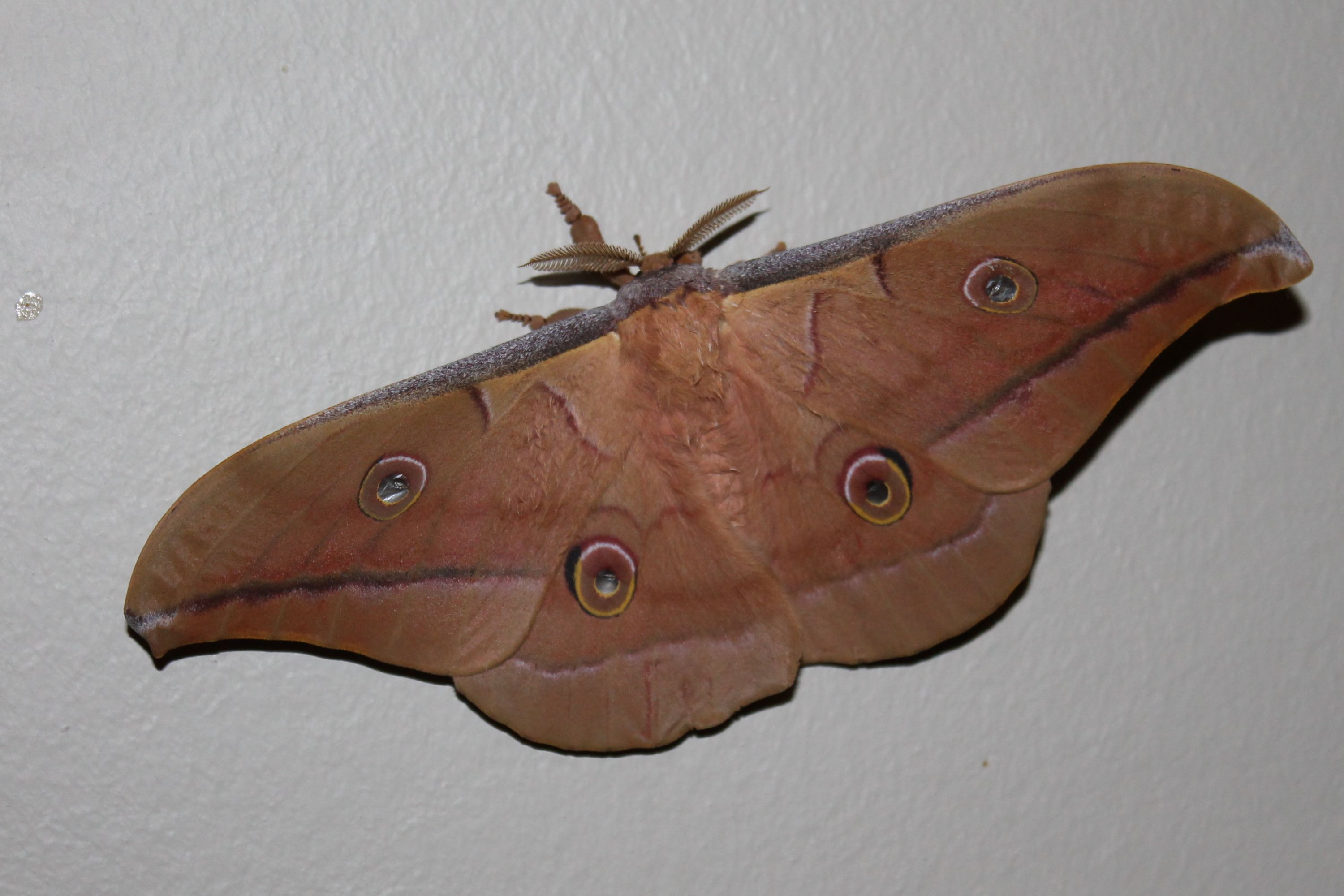Chinese (oak) tussar moth
(Antheraea pernyi)

Description
Antheraea pernyi, the Chinese (oak) tussar moth, Chinese tasar moth or temperate tussar moth, is a large moth in the family Saturniidae. The species was first described by Félix Édouard Guérin-Méneville in 1855. Antheraea roylei is an extremely close relative, and the present species might actually have evolved from ancestral A. roylei by chromosome rearrangement. They are originally from southern China. Used for tussar silk production, they have been distributed more widely across subtropical and tropical Asia. Unlike the domestic silk moth which is entirely dependent on human care, tussah silk moths can survive in the wild if they escape from captivity; small local populations of such feral stock may thus occasionally occur. The colour and quality of the silk depends on the climate and soil. This is one of the major producers of tussar silk. It was of commercial importance during the Han Dynasty and early Three Kingdoms era, about 200 BC to 250 AD. More recently, the hybridogenic species Antheraea × proylei is being bred for tussah silk production. It originated from a natural hybrid between male A. pernyi and A. roylei females, F1 females of which were backcrossed to A. pernyi males. For reasons unknown, it is a case of paternal mtDNA transmission: the mitochondrial genome, normally inherited from the mother only in sexually reproducing organisms, is almost identical to that of the present species. This silkworm is raised in China for its silk. It is referred to as tussah, Chinese tussah, oak tussah, or temperate tussah. It is the source of tussah spinning fiber that is used in the West. It is a relative of the tropical tussah silk moth, Antheraea paphia of India, and also related to Antheraea polyphemus, the American polyphemus silk moth. In China, they are fed on plantations of specially trimmed oak trees on the hillsides. Antheraea is a moth genus belonging to the family Saturniidae. The genus was erected by Jacob Hübner in 1819. Several species of this genus have caterpillars which produce wild silk of commercial importance. Commonly called "tussar silk", the moths are named tussar moths after the fabric. The butterflies of the genus are very large and yellowish to brownish in color. There are large disc-shaped spots on the fore and hind wings. There are no significant differences in wing markings between the sexes. The tentacles are quadruple comb-shaped, in the males they are very broad and feather-like, in the females, however, narrow.
Taxonomic tree:







